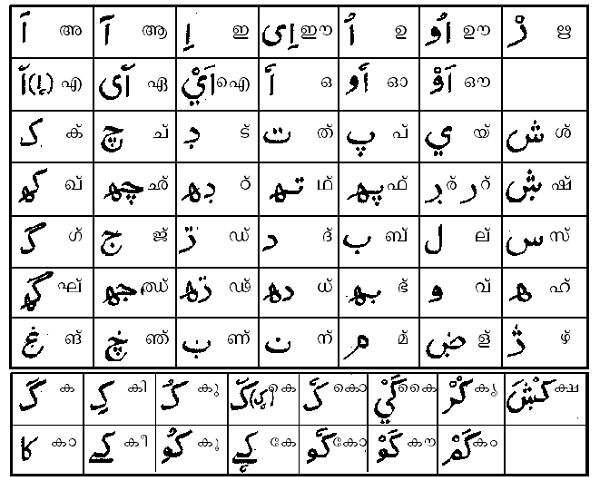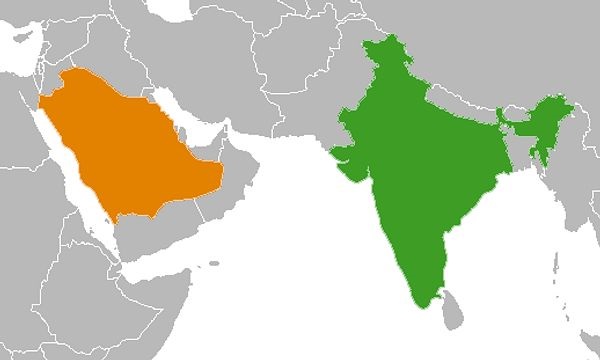WOMEN EMPLOYMENT IN MANUFACTURING SECTOR OF INDIA: AN ANALYSIS
SHAJI C JOHN
Research Scholar, Department of Commerce, Mar Ivanios College

In this era of digitalization and automation where technology has been developing an appetite for jobs otherwise requiring human labour, our understanding of what can be done to sustain and eventually accelerate the process of job growth poses a question that is hard to answer yet and has serious consequences if chosen to avoid. With increased competitiveness, continuous technological progress and rising capital intensities in production being the driving force of growth in manufacturing the extent to which this sector can contribute towards higher job creation becomes questionable. Moreover, we find that women often succumb to challenges posed by our technologically advancing economy owing to the abysmal state we find them in, with respect to education, skill, access to resources etc. Outflows of labour from agriculture and concerns raised about the employment prospects of low skilled women quickly prompt labour intensive sectors such as apparel, leather and footwear etc. as the next resort. In light of the above, this paper focuses on analyzing some general trends of employment in the India’s organized manufacturing sector and study the impact of increasing capital intensity in production on the employability of India’s women workforce. KEYWORDS: Economic growth, employment, gender, industrial sector, labour intensive sector.
INTRODUCTION
As India approaches its demographic dividend, with its working age population forecasted to peak in 2030, this poses both an opportunity as well as a challenge for our policy makers. The opportunity lies in forcing into action the tremendous potential that agents in their prime working age possess, spurring production activity and discovering new horizons for growth. The challenge, on the other hand, entails keeping up with required structural changes such as investments in infrastructure, education and not compromising on environmental concerns etc., which are a must whilst attempting to tap potential growth and make it sustainable. Further with half of our workforce being dominated by women, generation of adequate employment for them is the need of the hour. Given the huge amount of disguised labour in our agricultural sector and a huge pool of unskilled labour force; the manufacturing sector appears to be next resort for generating required employment opportunities. But the growth in the Indian manufacturing sector has not always been accompanied by a rise in the employment. Various reasons such as stringent labour laws, rising labour costs etc. have been cited as important factor s explaining the jobless growth in this sector. In light of the above this paper seeks to identify the sectors that would help in promoting the employment of women and assess the impact of growth in this sector on their employability.
REVIEW OF LITERATURE There has been an ambiguous relationship between growth in the Manufacturing sector and the employment generation by the same. Employment in the Manufacturing sector remained virtually stagnant in the 1980’s after which during the 1990’s the growth in the Indian Manufacturing sectors was also accompanied by greater job creation. Various reasons such as stringent labour reforms, higher real wages, increase in productivity, a shift away from labour intensive industries etc. were stated as the major factors responsible for the sluggish growth in employment in the registered manufacturing sector. The slowdown in the 1980’s followed by rising employment in the 1990’s may partly be explained by changes in the size structure in favour of small and medium-size factories and declining real wages in the 1990’s (Goldar, 2000). However, this view has been contested and the fall in growth of manufacturing sector in the 1980’s followed by a rise subsequently is considered to be the reason for the reversal in this trend (Nagaraj, 2000). From 2003-04 to 2008 the employment growth in the manufacturing sector increased at 7.5% reversing the previous trend of jobless growth, which was partly attributed to the labour reforms (Goldar, 2011). However, the stringency of labour reforms in influencing the growth of jobs in the manufacturing sector is often criticized on the grounds of considerable evasion of law etc. In the midst of this ongoing debate explaining low employment creation in the registered manufacturing sector, the manufacturing sector has witness rising capital intensities. The 2000’s marked a sustained increase in capital intensity that has resulted in substitution of capital for labour as well as technological up gradation for organized manufacturing as a whole (Kannan, 2009). Kapoor (2016) points out to the fact that the entire decade 2000’s onwards was accompanied by rising capital intensities in production. The rising capital intensities in manufacturing are expected to replace labour. The employment scenario for women has been much worse than the male counterparts. There exists a huge disparity in the employment statistics between male and female work force participation rates. Himashu (2011) and Abraham (2009) have pointed out that employment of women in India is concentrated mainly in low paid jobs and is characterized by the prevalence of ‘distress employment’. Distress employment implies that women in India choose to seek work only in a situation of distress such as a loss in husband’s income and other economic constraints. Most of the liberalizing countries that have stressed on an export led growth witnessed a change in the gender composition of their workforce to include more women however in case of India even in the post industrialization period the female work force participation rates continued to decline.
IMPORTANCE OF STUDY The trends in economic growth and employment in India have been puzzling. Even when the economy grew at a rate of almost 8.6% between 2004-05 and 2011- 12 there was a significant decline in the workforce. Himanshu (2011) has pointed out that this dip in the labour force can be attributed to the withdrawal of women, children and elderly from the labour force during this period. Abraham (2009) asserts that the nature of employment for women in India is largely distress driven and most women who are employed in the Indian workforce come from very poor economic backgrounds. In light of the above the motivation of this study is to identify the sectors that could help in promoting the employment of women in long run.
STATEMENT OF THE PROBLEM The paper seeks to identify the industries within the industrial sector that would promote employment generation for women. Moreover, in the recent decades
The industrial sector has been facing challenges in the form of technological changes etc. which is leading to an increase in the use of capital and fall in the use of labour. This is also leading to an increase in the need for skilled labour and decline in the opportunities for unskilled workers. This paper seeks to evaluate the impact of all these changes on the employment for women in the Indian manufacturing sector.
OBJECTIVES
• To explore the industries which not only generate employment but also employ a large proportion of women.
• To identify the impact of rising capital intensities and technological progress on the industries which are critical to the employment generation for women
HYPOTHESIS
Whether the increasing capital intensity of Indian manufacturing firms has a negative impact on the employment of women
Whether the increase in ratio of cost of labour to the cost of capital results in the displacement of women from the manufacturing workforce
Whether the growth in the Indian manufacturing sector is leading to significant increase in the employment for women
RESEARCH METHODOLOGY
The analysis has been done for industries following the NIC 2008 Classification at the two digit level using data from the Annual Survey of Industries. Some general trends across manufacturing across the last decade have been studied using the EPRWF concordance series. The industries have been categorized into capital and labour intensive based upon their capital to labour ratio, the median capital ratio across all industries was calculated for the last decade from 2004-05 to 2014- 15 and the industries that had a capital to labour ratio higher than the median through the entire decade were classified as capital intensive and rest as labour intensive. For a few industries, where the capital to labour ratio was not higher or lower than the median value across the entire decade, they have been classified as capital intensive if their ratio was higher than the median for majority of the years. The paper then attempts to identify the most labour intensive industries based upon their labour intensities and the industries employing maximum number of women. Further as rising capital intensities are associated with a displacement of unskilled labour and women constitute a large part of this unskilled workforce, an attempt has been made to understand the impact of capital intensification on employment of women across industries.
RESULTS AND DISCUSSION A) WOMEN EMPLOYMENT ACROSS MANUFACTURING INDUSTRIES
Women form about half of the total workforce but given that women in India have traditionally had much less access to resources than men (like lower levels of education etc.) they contribute to a large proportion of our unskilled workforce.
TABLE 1: INDUSTRIES WITH HIGHEST LABOUR TO OUTPUT RATIOS
Industry codes & Industries
16 Manufacture of Tobacco Products
18 Manufacture of Wearing Apparel Dressing and Dyeing of Fur
19 Tanning and Dressing of Leather Manufacture of Luggage, Handbags, Saddlery, Harness and Footwear
14 Other Mining and Quarrying
17 Manufacture of Textiles
20 Manufacture of wood products and cork except furniture, manufacture of articles of straw and plating products Table 2 depicts the unemployment rate has been much greater for females both across the rural and urban areas as compared to males. The percentage share of
women employed in the manufacturing sector from urban households has been significant and varies across time periods with policy changes such as trade
liberalization but the assessment of women actually employed remains vague due to the large number of women belonging to the self-employed category (Mitra, 2006). Within the organized manufacturing sector, it is the labour intensive industries employ about 60% of the all the women employees. But even though females form about half of our workforce the employment of women in manufacturing in India seems to be much less than that of men. As per the data of the Annual Survey of Industries 2014-15, out of the total workers that were directly employed only about 19% were women. Out of this small percentage about 75% of the women (in 2014-15) are concentrated just in five industries which are: Manufacture of Wearing Apparel, Manufacture of food products, Manufacture of textiles, Manufacture of leather and related products and Manufacture of Tobacco products with the highest proportion of women being employed in the Apparel sector.
Table 3 depicts the share of women employment in these industries, while the apparel sector alone contributes to the highest proportion of women employed,
all other industries apart from these one’s mentioned above contribute to only 26% of the total industrial female workforce.
TABLE 2: UNEMPLOYMENT RATE (2015-16)
Sector Male Female Person
Rural 4.2 4.2 5.1
Urban 3.3 12.1 4.9
Combined 4 8.7 5 Source: Labour Bureau’s Employment Unemployment report for the year 2015-16.
B) LABOUR INTENSIVE INDUSTRIES AND WOMEN EMPLOYMENT In order to generate adequate employment in the manufacturing sector it is important that we boost growth in our labour intensive sectors. The data depicts that it has not been our labour intensive sector and rather the capital intensive one that is responsible for production of more output, depicting the fact that the
manufacturing growth in our country has not been tilted enough towards the labour intensive manufacturing sector. The data from Table 3 indicates that industries such as Manufacture of Wearing Apparel and textiles, Manufacture of Leather Products and Manufacture of Tobacco are not only the most labour intensive industries but also promote the maximum engagement of women. Thus a focus on these industries is likely to contribute significantly towards creation of employment while also promoting the employment of women across the country. TABLE 3: WOMEN EMPLOYED ACROSS ALL INDUSTRIES (2014-15) Industries Percentage
Apparel 28%
Food products 19%
Textiles 16%
Leather 6%
Tobacco 5%
All other industries 26%
Source: data from the Annual Survey of Industries, 2014-15 It points out that industries for manufacture of apparel, manufacture of textiles and the manufacture of leather and related products are not only amongst the top labour intensive industries but also have the highest contribution in providing jobs to women in the country. Out of these industries the Tobacco industry has witnessed a decline of 11% in the last decade in the labour intensity. It is to be noted that women in India constitute about half of the total workforce, however, their total share in manufacturing is only about 20%. This clearly entails that not only we need to focus upon generating more employment in the manufacturing sector but also ensure that in order to tap the full benefit of demographic dividend we do not leave our women workforce behind. In light of the above it becomes important to assess the contribution of these identified industries in the Indian manufacturing sector today and find if we will be able to tap the full potential of these industries or we severely lack the potential of productive jobs in these sectors. Further, it must also be noted that the rising capital intensity and technological up-gradation (which is consequently leading to a demand for a more skilled labour force) across both labour intensive and capita intensive industries poses another challenge in promoting the employment in these sectors.
Table 4 depicts the estimation from the panel data regression results aimed at assessing the impact of rising capital intensity etc. on the percentage of women
employed across industries. The dummy variable introduced for capital intensive industries indicates that the capital intensive industries employ a significantly lower percentage of female and as the capital intensity increases across the industries it has a negative impact on employment of women. This is further substantiated by the coefficient of ratio of cost of labour to the cost of capital having a significant negative relationship with the percentage of women employed. The increase in cost of labour to the cost of labour implies a reduction in the relative cost of capital thus leading to shift away from labour to capital. Rising capital intensification leads to a fall in the employability of unskilled labour force, with labour becoming more expensive perhaps the women are first to get displaced. After controlling for the capital intensive industries, the rise in rate of growth of manufacturing sector is found be positively related to the percentage of women employed across industries and time however the coefficient is found to be small. An analysis of the data reveals that across this time period there has been an improvement in the ratio of females to the total directly employed workers but the increase has been marginal and not very substantial for most industries except for a few industries like the manufacture of leather and related products where the percentage of women increased from 33% to 40%. The above results indicate that a growth in labour intensive manufacturing does have a significant and positive impact on the percentage of women employed across industries. However, increasing capital intensification is leading to a displacement of women labour. Since capital intensive industries having a larger contribution in the total gross value added across industries, the potential for generating adequate employment for women becomes somewhat restricted. TABLE 4: ESTIMATION RESULTS FROM A RANDOM EFFECTS MODEL ACROSS INDUSTRIES
Dependent Variable: Proportion of Women Employed across industries
Model 1 Model 2 Model 3
Dummy for Capital Intensive industries -9.10** -8.70** -7.53**
(4.59) -(4.51) (4.51)
Log of capital to labour ratio -1.65* -1.76** -1.74*
(0.90) (-0.84) (0.87)
Rate of growth of industries 0.02* 0.02* 0.02*
(0.14) (0.13) (1.50)
Cost of Labour/ Cost of capital - -3.02** -3.59**
(1.28) (1.34)
Ratio of skilled to total labour - - 0.01
(0.008)
Constant 15.24*** 10.7** 8.59**
(4.35) (4.50) (4.96)
R square
Within 0.23 0.36 0.41
Between 0.25 0.29 0.29
Overall 0.25 0.29 0.29
Prob > chi2 0.002 0.000 0.00 C) TRADE PERFORMANCE OF LABOUR INTENSIVE INDUSTRIES Export demand and growth plays an important role in determining the performance of the Indian manufacturing sector. Hence, this last section focuses on the impact of trade on our labour intensive industries that are crucial for employment generation. Trade has been positively linked to generation of employment for women in many developing economies. The Make in India initiative launched by the government in 2014 listed industries like textiles and garments, leather and footwear, gems and jewellery, food processing industries, capital goods industries like machine tools, heavy electrical equipment, heavy transport, earthmoving & mining equipment, Industries with strategic significance like aerospace, shipping, IT hardware & electronics, telecommunication equipment, defence equipment, solar etc. as its focus sectors. Since not much time has elapsed since the launch of the scheme, it would not be correct to make any critical judgments about the same. The two focus areas of the Make in India program look at promoting Foreign Direct Investment into the country and boosting a export oriented growth. While the initiative has been quite successful in boosting the overall Foreign Direct Investment (FDI) inflows into the country in a short span of time, it becomes important to have a look at the sectors benefitting the most out of it. The figures released by the Reserve Bank of India indicate that if we have a look at the most recent figures of 2017, sectors such as services sector, computer hardware and software, construction, telecommunications, automobiles, drugs and pharmaceuticals etc. most of which are capital intensive attracted the highest FDI inflows. The share of FDI to the textile and leather products divisions was
only 0.71% and 0.05% respectively of the total inflows of FDI. The Food Processing segment attracted about 2% of the total FDI inflows. Thus the data indicates that FDI that has grown after the launch of Make in India program in India has been concentrated towards the capital intensive sector and the labour intensive industries are not its major recipients till date. Another important aspect has been the change in exports after the launch of the initiative, as Table 6 shows the share of exports from the manufacturing as whole has increased throughout with about a 6% increase after 2014 but within the manufacturing sector goods the largest increase is in the electronic and engineering goods together and the gems and Jewellery sector (which even though labour intensive employed much less percentage of women in comparison to the other labour intensive sectors). The export share of leather and apparel sectors registers a decline both as percentage of the total and manufacturing exports from 2015-16 to 2016-17. Thus even after the launch of Make in India the share of exports of these sectors has more or less remained the same. Apart from the Make in India initiative the government also launched a lot of other schemes for promoting our labour intensive industries such as reducing the tariffs, providing subsidies; labour reforms etc. Since most of the steps are much recent is difficult to evaluate their contribution in boosting the growth in these sectors although one of the recently launched initiatives has been evaluated in the Economic Survey 2017-18.
The government had announced a Rs. Six thousand crores package for the textiles and apparel industries in 2016 which was implemented in November 2016, the survey using an economic analysis proves that even though this boost did have a significant positive impact on the increasing the exports of the ready-made garments, such an impact was not seen on the other commodities in this sector. Both leather exports and the exports of textiles and apparel have witnessed a positive trend in the exports but the leather and footwear industry for which the percentage of women employed increased from 33% to 40% over 2008 to 2014- 15 has not witnessed any substantial increase in its exports probably due the reason that the world demand is biased towards non leather footwear while India specialized in the production of leather articles (Economic Survey of India, 2016-17). On the contrary even though the exports of apparel and textiles improved significantly, the proportion of women employed in these sectors shows only a marginal increase and has remained around 50% throughout for apparel and 19% around textiles.
RECOMMENDATIONS AND SUGGESTIONS Women form about 50% of the total work force in India; hence, promoting the sectors that employ women’s labour intensively is crucial. Further given the large pool of unskilled women labour in the country, the labour intensive industries would play a crucial role in providing employment opportunities to the less skilled or uneducated women who cannot be absorbed in the services sector. The availability of jobs in the manufacturing industries would also lead to a transfer of women from low paid jobs in construction and agriculture. Thus, the need of the hour is that the policy makers adopt policies that promote the growth in labour intensive manufacturing and Small and Medium enterprises which can increase the absorption of women in the workforce.
CONCLUSION The labour intensive industries such as Apparel & Textiles and Leather& Footwear employ largest proportion of the female labour force. Promoting growth in these sectors might help change the gender composition of our industrial workforce by including more women. In the Indian context the growth of organized manufacturing has not been dominated by the growth in our labour intensive sector. The labour intensive industries have consistently had a lower share in the total gross value added with its share accounting only about 33% of the gross value added in 2014-15 as compared to 66% for the capital intensive industries. Due to the lower total output being produced by this sector it employed only 24% of the total workforce in spite of the fact that they require a higher level of labour for every unit of output produced. In terms of employment of women, for most of the industries the percentage of women in the workforce increased but the percentage increase was not very substantial. As rising capital intensities in production develop an appetite for jobs otherwise requiring human labour, this would not only lead to a fall in the potential for the Indian manufacturing sector to create jobs but also bias the growth process away from industries requiring women labour. Further, even though the exports for labour intensive sectors follow a positive trend still there exist a huge scope for boosting the growth in these industries and increasing the exports manifolds.
REFERENCES
1. Goldar, Bishwanath. ‘Growth in Organised manufacturing employment in recent years.’, Economic and political weekly (2000), ISSN 0012-9976, pp. 2023.
2. Swamy, Gurushri., ‘International trade and women’, Economic and Political weekly (2004), ISSN 0012-9976, pp. 4885-4889
3. Mitra, S., ‘Patterns of female employment in urban India: Analysis of NSS data 1983 to 1999-2000’, (2006), Economic and Political Weekly, ISSN 0012-9976, pp.5000-5008
4. Abraham, V., ‘Employment growth in rural India: distress-driven?’, Economic and Political Weekly (2009), pp.97-104
5. Goldar, B., ‘Employment growth in organised manufacturing in India’, Economic and Political Weekly, (2011), ISSN 0012-9976, pp. 1191-1195.
6. Himanshu, ‘Employment trends in India: a re-examination’, Economic and Political Weekly (2011), ISSN 0012-9976, pp. 43-59.
7. Rangarajan, C., and Padma Iyer Kaul & Seema, ‘Where is the missing labour force’, (2011), Economic and Political Weekly, ISSN 0012-9976, pp. 68-72.
8. Mazumdar, Indrani, N. Neetha, and Indu Agnihotri, ‘Migration and gender in India’, Economic and Political Weekly (2013), ISSN 0012-9976, pp. 54-64.
9. Ministry of Statistics and Programme and Implementation, ‘Annual Survey of Industries Database’, (2014-15)
10. Ministry of Finance, ‘Economic Survey of India’ (2015-16), Vol. I, pp. 18-27





